-
 Bitcoin
Bitcoin $107,443.3008
-1.17% -
 Ethereum
Ethereum $2,494.2503
-0.63% -
 Tether USDt
Tether USDt $1.0003
0.00% -
 XRP
XRP $2.2496
2.23% -
 BNB
BNB $658.7569
0.63% -
 Solana
Solana $154.9826
1.94% -
 USDC
USDC $1.0000
0.01% -
 TRON
TRON $0.2799
1.07% -
 Dogecoin
Dogecoin $0.1659
-1.78% -
 Cardano
Cardano $0.5745
0.25% -
 Hyperliquid
Hyperliquid $39.7005
0.13% -
 Bitcoin Cash
Bitcoin Cash $519.5989
3.78% -
 Sui
Sui $2.7874
-2.40% -
 Chainlink
Chainlink $13.3762
-1.69% -
 UNUS SED LEO
UNUS SED LEO $9.0784
-0.64% -
 Avalanche
Avalanche $17.9846
-2.81% -
 Stellar
Stellar $0.2390
-0.06% -
 Toncoin
Toncoin $2.9028
0.25% -
 Shiba Inu
Shiba Inu $0.0...01147
-2.17% -
 Litecoin
Litecoin $86.6956
-1.27% -
 Hedera
Hedera $0.1508
-0.50% -
 Monero
Monero $322.6222
3.26% -
 Polkadot
Polkadot $3.4124
-2.99% -
 Dai
Dai $0.9999
0.00% -
 Bitget Token
Bitget Token $4.5434
-1.97% -
 Ethena USDe
Ethena USDe $1.0002
0.00% -
 Uniswap
Uniswap $7.1562
-2.61% -
 Aave
Aave $275.8830
-1.02% -
 Pepe
Pepe $0.0...09790
-4.04% -
 Pi
Pi $0.5018
-5.09%
How to send Bitcoin from Bitfinex to Bitstamp
To transfer Bitcoin from Bitfinex to Bitstamp, ensure verified accounts, secure connections, and double-check addresses and amounts for a successful transaction.
Apr 05, 2025 at 08:08 am
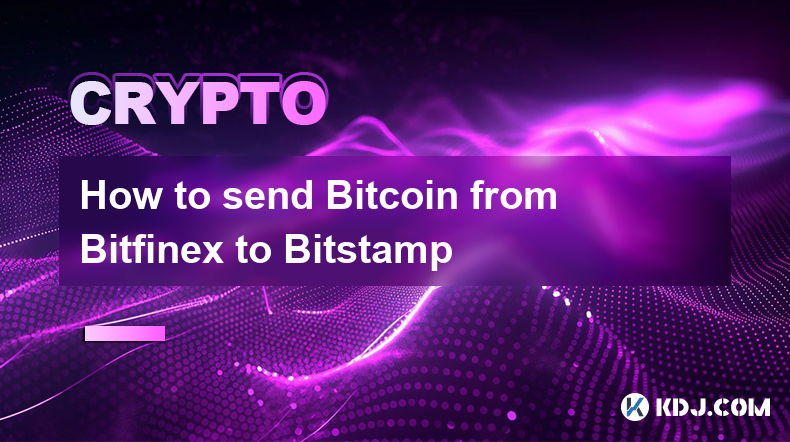
Sending Bitcoin from Bitfinex to Bitstamp involves several steps that require careful attention to detail to ensure the transaction is secure and successful. In this guide, we will walk you through the process step-by-step, ensuring you understand each part of the transfer. This process is crucial for those looking to move their assets between two of the most popular cryptocurrency exchanges. By following these instructions, you can confidently manage your Bitcoin transfers and take advantage of the different features and trading opportunities offered by both platforms.
Preparing for the Transfer
Before you start the transfer process, it's important to ensure that you have accounts set up on both Bitfinex and Bitstamp. If you haven't already, you'll need to complete the registration process on both platforms and verify your identity according to their respective requirements. Once you have verified accounts, you should also check that you have sufficient Bitcoin in your Bitfinex wallet to cover the amount you wish to transfer, plus any transaction fees that might be incurred.
Logging into Bitfinex
The first step in the transfer process is to log into your Bitfinex account. Ensure that you are using a secure internet connection and that your device is free from any malware or viruses. Once logged in, navigate to the wallet section of your account. This is where you will initiate the Bitcoin transfer.
Initiating the Bitcoin Withdrawal
In the wallet section of Bitfinex, look for the option to withdraw Bitcoin. Click on this option, and you will be prompted to enter the amount of Bitcoin you wish to send to Bitstamp. It's crucial to double-check this amount to avoid any errors. Next, you will need to provide the Bitcoin address to which you want to send the funds. This address should be your Bitstamp Bitcoin deposit address.
Obtaining Your Bitstamp Bitcoin Deposit Address
To obtain your Bitstamp Bitcoin deposit address, log into your Bitstamp account. Navigate to the deposit section, and select Bitcoin as the cryptocurrency you wish to deposit. Bitstamp will generate a unique Bitcoin address for you. Copy this address carefully, ensuring that you do not miss any characters. It's a good practice to verify this address multiple times before proceeding with the transfer.
Entering the Bitstamp Address on Bitfinex
Return to your Bitfinex account and paste the Bitstamp Bitcoin deposit address into the withdrawal form. Double-check that the address is correct and that the amount of Bitcoin you are sending is what you intended. If everything looks correct, you can proceed to confirm the withdrawal. Bitfinex may require you to enter a two-factor authentication (2FA) code to proceed with the transaction, adding an extra layer of security.
Confirming the Withdrawal on Bitfinex
After entering the 2FA code, confirm the withdrawal. Bitfinex will process your request and send the Bitcoin to the Bitstamp address you provided. The transaction will be broadcast to the Bitcoin network, where it will need to be confirmed by miners. This process can take anywhere from a few minutes to several hours, depending on the network congestion and the transaction fee you chose.
Monitoring the Transaction
Once the withdrawal is initiated, you can monitor the transaction's progress on a Bitcoin blockchain explorer using the transaction ID (TXID) provided by Bitfinex. This ID can be found in your Bitfinex transaction history. By entering the TXID into a blockchain explorer, you can see the number of confirmations the transaction has received and estimate when it will be fully confirmed.
Confirming the Deposit on Bitstamp
After the Bitcoin transaction has been confirmed on the blockchain, the funds should appear in your Bitstamp account. You can check this by logging into Bitstamp and navigating to your Bitcoin wallet. The amount you sent from Bitfinex should now be available for trading or withdrawal. If you do not see the funds after a reasonable amount of time, you may need to contact Bitstamp's customer support for assistance.
Understanding Transaction Fees
Both Bitfinex and Bitstamp may charge fees for the transfer of Bitcoin. Bitfinex typically charges a withdrawal fee, which is deducted from the amount of Bitcoin you are sending. Bitstamp may also charge a deposit fee, although this is less common. It's important to be aware of these fees and factor them into your transfer calculations to ensure you are sending the correct amount.
Security Considerations
When transferring Bitcoin between exchanges, security should be a top priority. Always use strong, unique passwords for your exchange accounts and enable two-factor authentication (2FA) wherever possible. Be cautious of phishing attempts and never share your private keys or login credentials with anyone. Additionally, consider using a hardware wallet to store your Bitcoin when not actively trading, as this provides an extra layer of security against online threats.
Common Issues and Troubleshooting
Sometimes, issues can arise during the transfer process. If you encounter any problems, such as the Bitcoin not arriving at Bitstamp, start by double-checking the Bitcoin address you used for the transfer. If the address was correct, check the transaction status on a blockchain explorer. If the transaction is stuck or has not been confirmed, you may need to wait longer or contact Bitfinex support for assistance. If the transaction was successful but the funds are not showing in your Bitstamp account, reach out to Bitstamp's customer support for help.
Best Practices for Future Transfers
To ensure smooth and secure Bitcoin transfers in the future, consider the following best practices:
- Always double-check the recipient's Bitcoin address before confirming the transfer.
- Keep your exchange accounts secure with strong passwords and 2FA.
- Monitor transaction fees and choose an appropriate fee level to ensure timely confirmation.
- Use a blockchain explorer to track the progress of your transactions.
- Keep a record of your transaction IDs for future reference.
By following these steps and best practices, you can confidently send Bitcoin from Bitfinex to Bitstamp and manage your cryptocurrency assets effectively.
Frequently Asked Questions
Q: How long does it take to transfer Bitcoin from Bitfinex to Bitstamp?
A: The transfer time can vary depending on the Bitcoin network's congestion and the transaction fee you chose. Typically, it can take anywhere from a few minutes to several hours for the transaction to be fully confirmed.
Q: Are there any fees associated with transferring Bitcoin between Bitfinex and Bitstamp?
A: Yes, both Bitfinex and Bitstamp may charge fees for the transfer. Bitfinex typically charges a withdrawal fee, and Bitstamp may charge a deposit fee, although this is less common. Always check the fee structure on both platforms before initiating a transfer.
Q: What should I do if my Bitcoin transfer from Bitfinex to Bitstamp is delayed?
A: If your transfer is delayed, first check the transaction status on a blockchain explorer using the TXID provided by Bitfinex. If the transaction is stuck, you may need to wait longer or contact Bitfinex support. If the transaction was successful but the funds are not showing in your Bitstamp account, reach out to Bitstamp's customer support for assistance.
Q: Is it safe to transfer Bitcoin between exchanges?
A: Transferring Bitcoin between exchanges can be safe if you follow best security practices. Use strong passwords, enable 2FA, and double-check the recipient's address. Be cautious of phishing attempts and consider using a hardware wallet for added security.
Q: Can I cancel a Bitcoin transfer after it has been initiated?
A: Once a Bitcoin transaction is broadcast to the network, it cannot be canceled. If you realize you've made an error, you may need to contact the recipient to request a refund, depending on the situation.
Disclaimer:info@kdj.com
The information provided is not trading advice. kdj.com does not assume any responsibility for any investments made based on the information provided in this article. Cryptocurrencies are highly volatile and it is highly recommended that you invest with caution after thorough research!
If you believe that the content used on this website infringes your copyright, please contact us immediately (info@kdj.com) and we will delete it promptly.
- Rare Find: The 2p Coin Error Worth £1,000!
- 2025-07-01 14:30:12
- Bitcoin Price Rollercoaster: Trump vs. Musk, and What It Means for Your Crypto
- 2025-07-01 14:30:12
- German Banks, Crypto Trading, and FOMO: A New Era?
- 2025-07-01 14:35:12
- XRPL, Token Tracker, and XRP Holders: Navigating Security, Innovation, and Future Wealth
- 2025-07-01 15:10:12
- ETF Approval, Crypto, and Institutional Investment: A New Era?
- 2025-07-01 15:10:12
- Bitcoin Breakout Incoming? July Patterns Hint at Historic Rally!
- 2025-07-01 14:50:12
Related knowledge
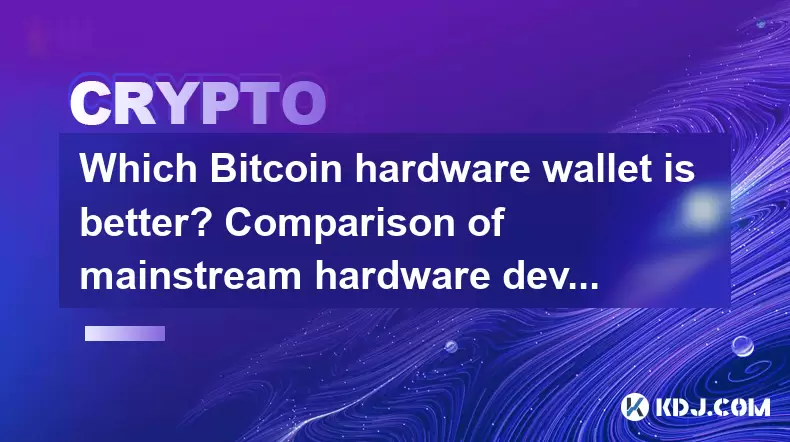
Which Bitcoin hardware wallet is better? Comparison of mainstream hardware devices
Jun 16,2025 at 02:08am
What Is a Bitcoin Hardware Wallet?A Bitcoin hardware wallet is a physical device designed to securely store the private keys associated with your cryptocurrency holdings. Unlike software wallets, which are more vulnerable to online threats, hardware wallets keep private keys offline, significantly reducing the risk of unauthorized access. These devices ...
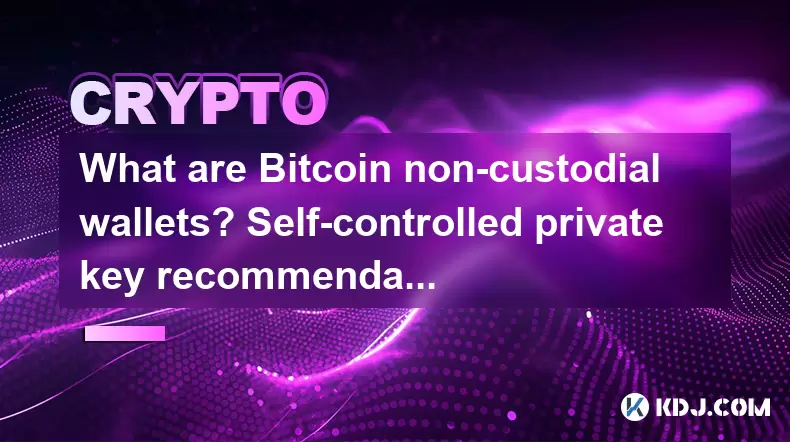
What are Bitcoin non-custodial wallets? Self-controlled private key recommendation
Jun 16,2025 at 11:29pm
Understanding Bitcoin Non-Custodial WalletsA Bitcoin non-custodial wallet is a type of digital wallet where users retain full control over their private keys. Unlike custodial wallets, which are managed by third-party services such as exchanges, non-custodial wallets ensure that only the user can access and manage their funds. This means no intermediary...
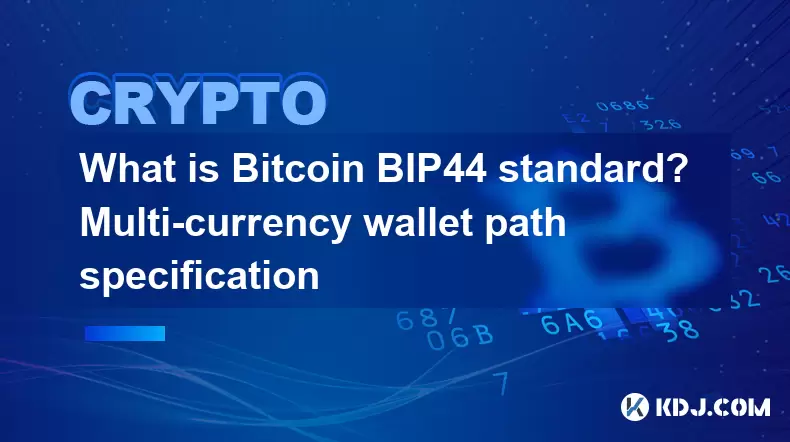
What is Bitcoin BIP44 standard? Multi-currency wallet path specification
Jun 15,2025 at 04:08pm
Understanding the BIP44 Standard in Bitcoin and CryptocurrencyThe BIP44 standard, which stands for Bitcoin Improvement Proposal 44, is a widely adopted hierarchical deterministic wallet structure used across various cryptocurrencies. It defines a structured path format that enables wallets to support multiple currencies while maintaining consistency and...
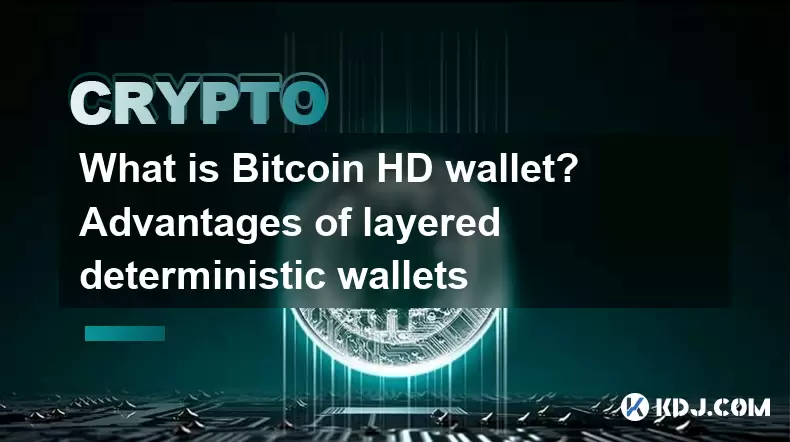
What is Bitcoin HD wallet? Advantages of layered deterministic wallets
Jun 16,2025 at 03:56pm
Understanding Bitcoin HD WalletsA Bitcoin HD wallet, or Hierarchical Deterministic wallet, is a type of cryptocurrency wallet that generates multiple keys and addresses from a single seed phrase. Unlike traditional wallets that create random private keys for each transaction, an HD wallet follows a structured hierarchy to derive keys in a deterministic ...

Is Bitcoin zero-confirmation transaction risky? Zero-confirmation usage scenarios
Jun 15,2025 at 03:57am
Understanding Zero-Confirmation Transactions in BitcoinBitcoin zero-confirmation transactions, often referred to as 'unconfirmed transactions,' are those that have been broadcast to the network but have not yet been included in a block. This means they have not received any confirmations from miners. While these transactions can be useful in certain con...
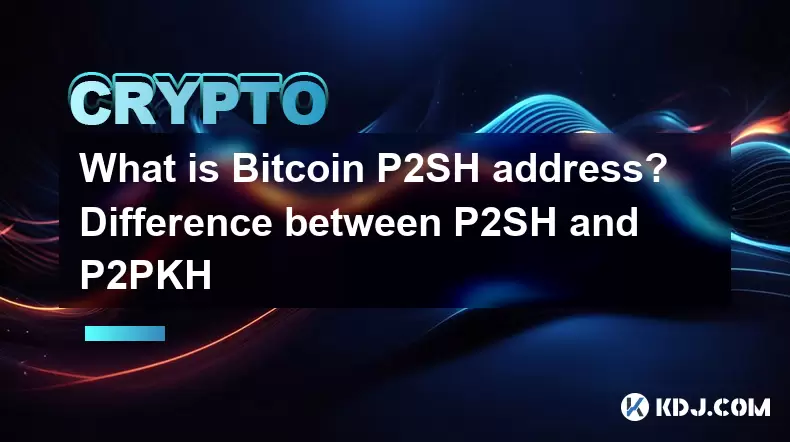
What is Bitcoin P2SH address? Difference between P2SH and P2PKH
Jun 16,2025 at 09:49pm
Understanding Bitcoin P2SH AddressesA Pay-to-Script-Hash (P2SH) address in the Bitcoin network is a type of address that allows users to send funds to a script hash rather than directly to a public key hash, as seen in earlier address formats. This innovation was introduced through BIP 16, enhancing flexibility and enabling more complex transaction type...

Which Bitcoin hardware wallet is better? Comparison of mainstream hardware devices
Jun 16,2025 at 02:08am
What Is a Bitcoin Hardware Wallet?A Bitcoin hardware wallet is a physical device designed to securely store the private keys associated with your cryptocurrency holdings. Unlike software wallets, which are more vulnerable to online threats, hardware wallets keep private keys offline, significantly reducing the risk of unauthorized access. These devices ...

What are Bitcoin non-custodial wallets? Self-controlled private key recommendation
Jun 16,2025 at 11:29pm
Understanding Bitcoin Non-Custodial WalletsA Bitcoin non-custodial wallet is a type of digital wallet where users retain full control over their private keys. Unlike custodial wallets, which are managed by third-party services such as exchanges, non-custodial wallets ensure that only the user can access and manage their funds. This means no intermediary...

What is Bitcoin BIP44 standard? Multi-currency wallet path specification
Jun 15,2025 at 04:08pm
Understanding the BIP44 Standard in Bitcoin and CryptocurrencyThe BIP44 standard, which stands for Bitcoin Improvement Proposal 44, is a widely adopted hierarchical deterministic wallet structure used across various cryptocurrencies. It defines a structured path format that enables wallets to support multiple currencies while maintaining consistency and...

What is Bitcoin HD wallet? Advantages of layered deterministic wallets
Jun 16,2025 at 03:56pm
Understanding Bitcoin HD WalletsA Bitcoin HD wallet, or Hierarchical Deterministic wallet, is a type of cryptocurrency wallet that generates multiple keys and addresses from a single seed phrase. Unlike traditional wallets that create random private keys for each transaction, an HD wallet follows a structured hierarchy to derive keys in a deterministic ...

Is Bitcoin zero-confirmation transaction risky? Zero-confirmation usage scenarios
Jun 15,2025 at 03:57am
Understanding Zero-Confirmation Transactions in BitcoinBitcoin zero-confirmation transactions, often referred to as 'unconfirmed transactions,' are those that have been broadcast to the network but have not yet been included in a block. This means they have not received any confirmations from miners. While these transactions can be useful in certain con...

What is Bitcoin P2SH address? Difference between P2SH and P2PKH
Jun 16,2025 at 09:49pm
Understanding Bitcoin P2SH AddressesA Pay-to-Script-Hash (P2SH) address in the Bitcoin network is a type of address that allows users to send funds to a script hash rather than directly to a public key hash, as seen in earlier address formats. This innovation was introduced through BIP 16, enhancing flexibility and enabling more complex transaction type...
See all articles

























































































